How to Jump Start a Car Safely: 6 Critical Steps
-
Pete Ortiz
- Last updated:

Jumping a car can seem like an intimidating task, especially if you don’t know how to do it. It’s important to understand the process before attempting to jump-start a car, as it can be dangerous if not done correctly. The jump start process can be successfully done using jumper cables.
This article provides a step-by-step guide on how to jump-start your car safely with jumper cables in six easy steps. We’ll go over all the critical steps, from connecting the jumper cables to safely removing them, so you can get your car running again.
What Do You Need to Jump Start a Car?
Before you get started, make sure that you have all the necessary tools at your disposal:
Jumper Cables
This is the most essential item for jump-starting a car, as it is the cable that will connect your flat battery to the working one. Make sure to use high-quality cables with strong insulation and thick enough wires that won’t overheat during the jump-starting process.
A Working Car
You’ll need a non-hybrid and non-electric car with a fully charged battery.
Battery Booster Pack
A portable battery is a great option if you have no access to a working car.
Safety Equipment
If necessary, wear safety goggles and gloves to protect your eyes and hands from any electrical sparks that may occur.
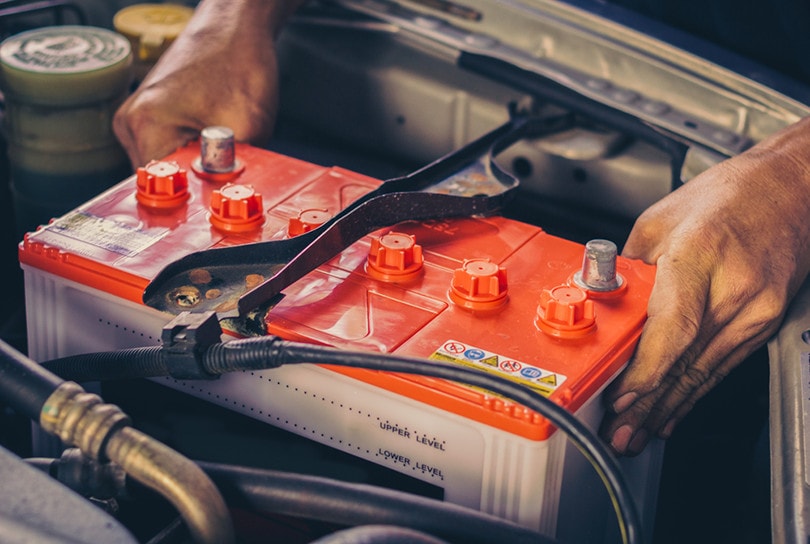
Safety Precautions
When jump-starting a car, it’s important to take extra precautionary measures to ensure the process is safe for all involved. The battery contains electrical energy and can emit flammable gases; mishandling this process can cause severe injury.
Here are a few safety precautions you should take when jump-starting a car:
1. Check the Battery and Jumper Cables for Damage
If the battery looks damaged or is leaking, do not attempt to restart it. It’s also advisable not to use damaged jumper cables as they increase the risk of accidents.
2. Remove Dangling Clothing and Jewelry
This is to ensure nothing metallic comes into contact with the battery terminals.
3. Avoid Smoking
This is a massive safety hazard. Avoid lighting up anywhere near the batteries.
4. Read Your Cars Manual
Here you will learn if extra steps are needed for a successful jump.
Once you have all the necessary items and safety measures in check, you are ready to begin jump-starting your car!
The 6 Critical Steps for Jump Starting Your Car With Jumper Cables
This is the most convenient and popular jump-start process since the tools needed for this are widely available.
Below is the step-by-step process:
1. Park the Cars
Make sure to park both cars close in the right position without the vehicles touching. Both cars should be parked where the batteries are closest to each other so that the jumper cables can reach the terminals of both batteries with ease.
After close parking, set your car in neutral or if it’s a manual or parking if it’s automatic, then engage the handbrake and turn off the engine.
2. Pop the Hoods
Access the batteries by opening the hoods or the trunk if that’s where the battery is located. Ensure that you can distinguish the negative and positive terminals on both batteries.
For the best results, ensure that the battery terminals are free from corrosion and dirt by wiping them down with a rag and that any electrical systems on the car with the flat battery are switched off.

3. Attach the Jumper Cables Correctly
When attaching the jumper cables to the car batteries, it’s important to take extra caution. First, make sure the clamps of the jumper cables do not touch each other while they are being connected. If they do, the resulting short circuit can cause sparks and electric shocks.
Start by connecting one of the red (positive) leads to the positive terminal on the dead car’s battery and then connect the other red lead to the positive terminal on the donor car’s battery. Do the same for the black (negative) leads, connecting one black lead to the negative terminal on the donor car and then connecting the other black lead to an unpainted metal part of the engine bay on the car with the dead battery, like a bolt or bracket.
Make sure the clamps are firmly attached, and the connection is secure so that no sparks occur. Keep all exposed connections away from your body and other objects as you connect them. Once everything is connected properly, you are ready to start your car!
4. Start the Cars
Start up the donor vehicle first, ensuring any electrical items such as lights and radio are off before starting it. Once running, let it idle for a few minutes while ensuring you don’t rev too much. Finally, try starting up the vehicle with the dead battery. If it doesn’t start straight away, leave it running for a few more minutes for the battery to recharge before attempting to start it again. Revving a little may accelerate the charging process.
After the engine on your car is running, leave it to run for about 10 minutes.
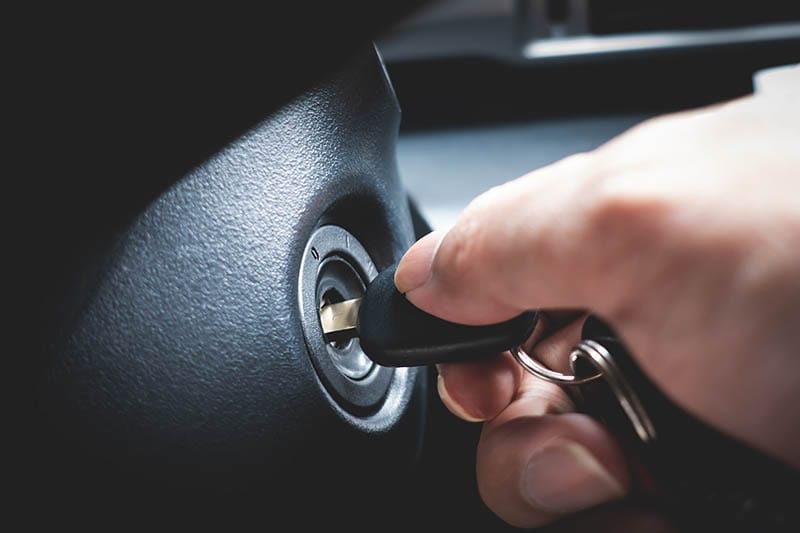
5. Turn Off and Disconnect the Jump Leads
The flat battery should be well charged by now and ready for a normal start. For this step, you may turn off the engines while disconnecting the jumper cables in the reverse order of how you connected them. Start with the black leads, followed by the red leads
6. Restart the Car
Turn on the ignition on your car for a normal start then proceed to take a short drive. The drive will ensure that the battery gets fully charged and will not disappoint you on your next start.
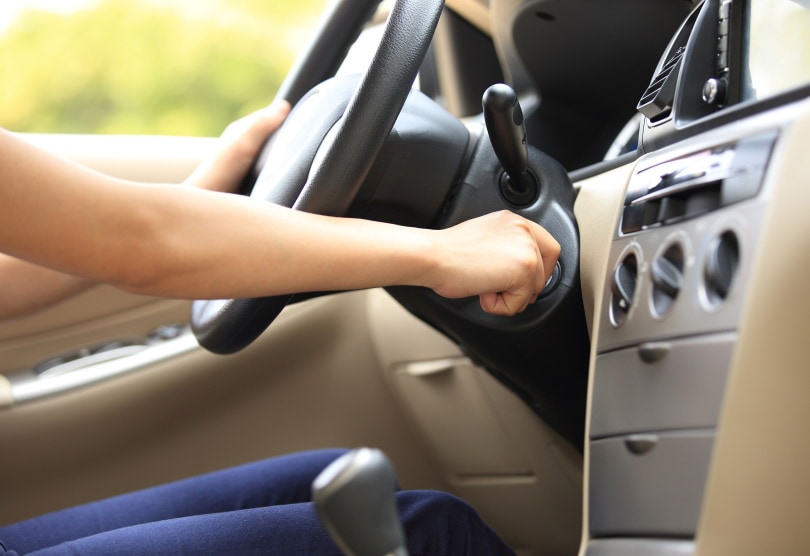
The 6 Critical Steps for Jump Starting Your Car With a Battery Booster Pack
In sticky situations where you find yourself far from help, a battery booster pack will come in handy. It can provide the power necessary to get your car’s engine running again fast. Below is the simple process to jump-starting your car with a portable battery:
1. Inspection
First, ensure that the battery booster pack is fully charged and compatible with the car’s battery. Inspect the car battery for any signs of damage or leaks. If there is any visible damage or leaking, do not attempt to jump-start it. Check that all the booster pack cables are properly fitted, and the pack is secured on a stable surface. Once everything is in place, proceed with the next steps.
2. Connect the Leads
Start by connecting the positive lead of the battery pack to the positive terminal of the car’s battery. After that, connect the negative jump lead of the battery pack to an earthing point on the engine bay or chassis, such as an unpainted metal nut or bolt which is not attached to any electrical components.
3. Switch On the Battery Pack
Once everything is properly connected, it’s time to turn on the battery pack. Make sure that the ignition of the donor vehicle is switched off and all accessories are off as well. Locate the on/off switch on the battery pack and turn it on. This will usually be indicated by a light or an indicator.
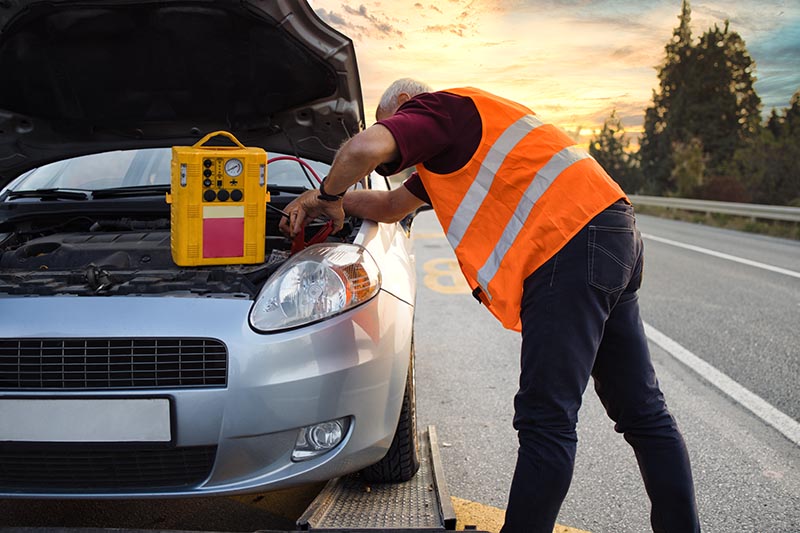
4. Start the Car’s Engine
Once the battery booster pack is on, it’s time to try and start the car. Turn the ignition key on your car and give it a few tries. With any luck, after a few attempts, the car should start. Once it starts, let the engine run idle for about 5–10 minutes while the battery pack is on. However, if it doesn’t start, there may be some other underlying causes other than just a flat battery.
5. Turn Off and Disconnect the Leads
After about 10 minutes of idle engine running, switch it off and then switch off the portable battery. Proceed to disconnect the leads in the reverse order of how you connected them. In this case, start with the negative lead and finish with the positive lead for a safe lead disconnection.
6. Restart Your Car
The last step is attempting to restart your car. After a successful jump start with a portable battery, your battery should have enough power to start your car.
Jump Starting a Car FAQs
Q: How can I tell if my car needs a jump start?
A: If your car won’t start, even after you’ve tried the usual methods, it’s probably due to a dead or flat battery and will need a jump start. You may also notice that your headlights and other electrical systems are weaker than usual or not working.
Q: What is the best way to jump-start a car?
A: The best way to jump-start a car is to use jumper cables. These should be attached to two cars, with one car providing the power and the other receiving it. To ensure safety, make sure you turn off both engines before connecting the cables and follow the manufacturer’s instructions carefully.
Q: Is it safe to jump-start a car?
A: Yes, as long as you take the proper precautions and follow the instructions carefully. Make sure to use jumper cables of sufficient length and gauge, keep away from any exposed wires or moving parts, and wear protective gloves when attaching and removing the cables.
Q: Are there any risks associated with jump-starting a car?
A: Yes, there are some risks associated with jump-starting a car. If the jumper cables are not connected correctly, sparks can occur, which can cause damage to the cars involved. Additionally, if the battery is old or faulty, jump-starting could cause further damage.
Q: Can I jump-start my car in the rain?
A: Yes. It’s relatively safe to jump your car in the rain. Just ensure that you follow the necessary steps of the jump-starting process and that your cables don’t get overly soaked.
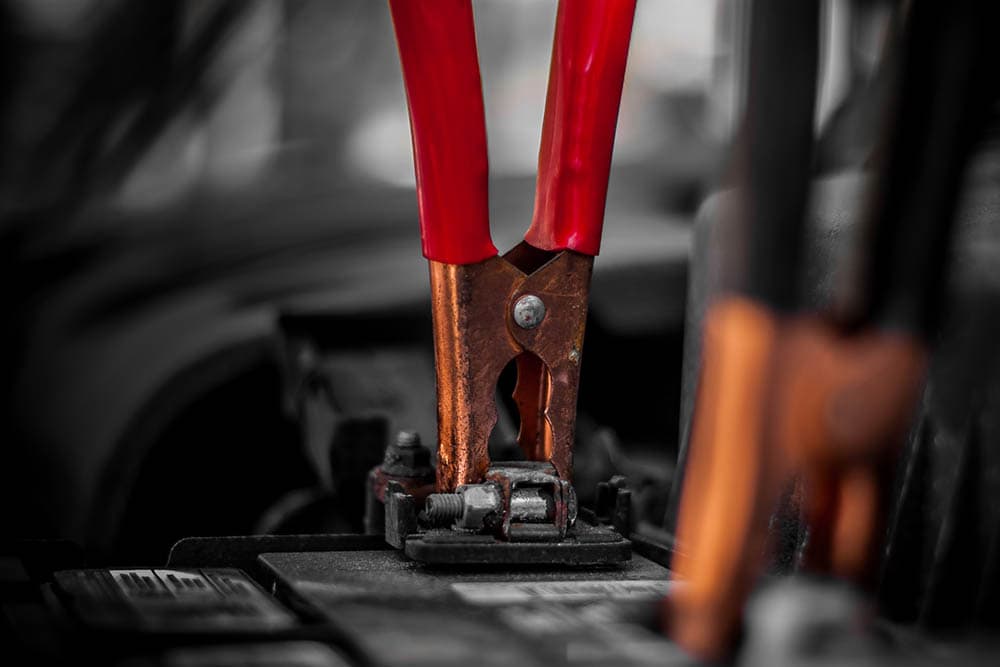
Conclusion
Jump starting a car can seem like a daunting task, but with the right information and a few simple steps, it doesn’t have to be! Knowing how to jump-start your car safely can be a lifesaver if you find yourself stranded on the side of the road without power.
Never try to jump-start a flooded, frozen, or overheated battery—in these cases, the safest course of action is to call for professional help.
Featured Image Credit: Kurbanov Vener, Shutterstock
Contents



